
St. Augustine is a city in and the county seat of St. Johns County located 40 miles south of downtown Jacksonville. The city is on the Atlantic coast of northeastern Florida. Founded in 1565 by Spanish explorers, it is the oldest continuously inhabited European-established settlement in what is now the contiguous United States.

Ximenez-Fatio House Museum is one of the best-preserved and most authentic Second Spanish Period (1783-1821) residential buildings in St. Augustine, Florida. In 1973, it was added to the National Register of Historic Places. It was designated a Florida Heritage Landmark in 2012.

The Spanish Military Hospital Museum is located at 3 Aviles Street, St. Augustine, Florida. The museum covers the Second Spanish Period (1784-1821) medical practices. The museum is open seven days a week from 9am to 5pm. Tours start on demand throughout the day and cover a surgical demonstration, apothecary demonstration, and tours of a medicinal herb garden.
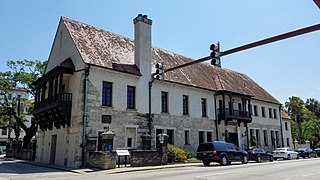
Government House, also known as Governor's House, is located at 48 King Street in St. Augustine, Florida, adjacent to the Plaza de la Constitución. The building, constructed of coquina, served as the governor's official residence from c. 1710 during the First Spanish Period (1565–1763), throughout the British Period (1763–1784), and until 1812 in the Second Spanish Period (1784–1821). Governor Gonzalo Méndez de Canzo was the first governor to build his residence on the present Government House site in 1598.
Jesse Fish was a shipmaster, merchant, and realtor who lived in St. Augustine, Florida under both Spanish and British rule, and is infamous in the town's history to this day. He was a schemer involved in contraband trade and illegal real estate deals, and operated as a slaver, smuggler, and usurer. By his slaver activities Fish introduced most of the bozales, or African-born slaves, registered in Spanish Florida during the decade (1752–1763) preceding Spain's cession of Florida to Great Britain. He has been accused of spying for England and Spain as a double agent during the Seven Years’ War, but there is no evidence to support the claim.

The González-Jones House is a historic home built during the First Spanish Period (1565–1763) in Saint Augustine, Florida. It is located at 56 Marine Street, one block north of the González–Alvarez House and the Saint Francis Barracks. This neighborhood includes nine colonial structures that survive in clusters along Marine and Saint Francis Streets. These buildings are all assumed to have been built after 1702, when the city was destroyed during a British siege.

The Oliveros House is located at 59 St. George Street, St. Augustine, Florida. It was built of coquina during the Second Spanish Period in Florida (1565-1763). Today it is a reconstructed building, standing on original foundations which were unearthed during archaeological excavations.
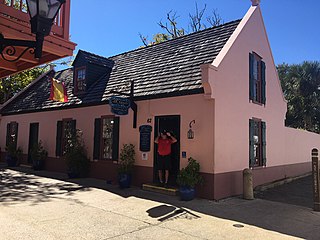
The Benet Store is located at 62 St. George Street, St. Augustine, Florida. The building is within the territory of the St. Augustine Town Plan Historic District.

A reproduction of Sims Silversmith Shop, operated by the Historic St. Augustine Preservation Board, is located on the site that is now 12 Cuna Street in St. Augustine, Florida. The precise location of William Sims's 18th century original shop is unknown.
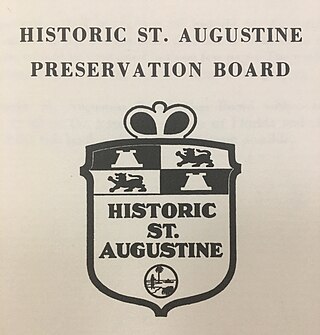
The Historic St. Augustine Preservation Board (HSAPB) was a state agency in Florida that participated in the restoration and preservation of historic buildings in St. Augustine, Florida from 1959 to 1997. Created in 1959 by Governor LeRoy Collins, the agency acquired, restored, and preserved historic structures in St. Augustine until its abolishment by the State of Florida in June 1997.

The Triay House is a historic property located at 31 St. George Street in St. Augustine, Florida. It is a reconstruction of the First Spanish Period structure that stood on the site.

The Sánchez de Ortigosa House is located at 60 St. George Street, St. Augustine, Florida. It is a reconstruction of a home dating from the First Spanish Period (1565-1763) that stood on this site.
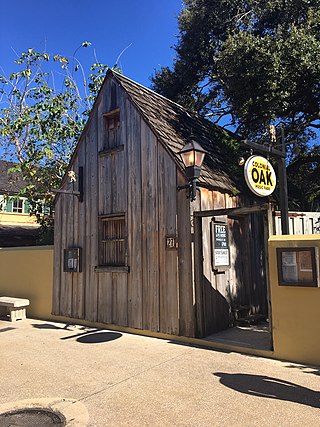
The Gómez House, located at 27 St. George Street in St. Augustine, Florida, is a reconstruction of a simple wooden house dating back to Florida’s First Spanish Period (1565-1763).
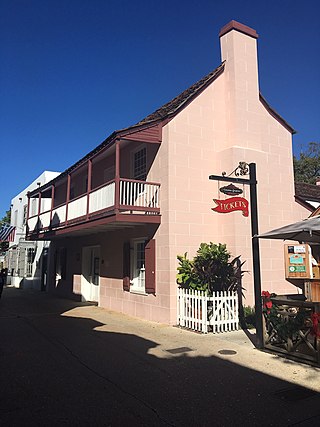
The De Mesa-Sánchez House is located at 23 St. George Street in St. Augustine, Florida. It is a restoration of a home dating back to East Florida's First Spanish Period.
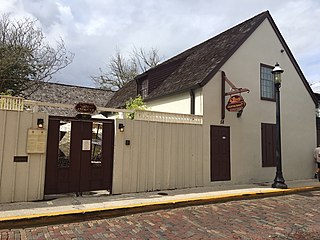
The Luciano de Herrera House is located at 58 Charlotte Street in St. Augustine, Florida. It is a reconstruction, depicting a house from St. Augustine's Second Spanish Period (1784–1821).

The Ortega House is located at 70 St. George Street in St. Augustine, Florida. It is a reconstructed home representing the architectural style of the First Spanish Period (1565-1763) in Florida.
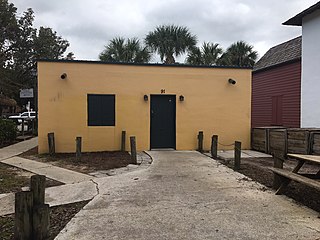
The Santoyo House is located at 91 St. George Street, St. Augustine, Florida. It is a reconstruction of a First Spanish Period (1565-1763) house in Florida.
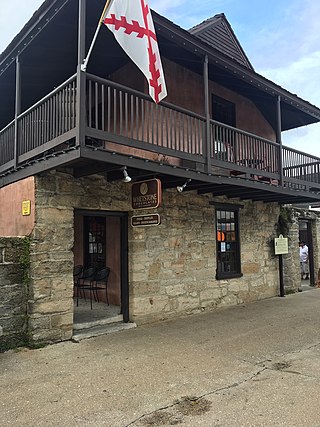
The Salcedo House and Kitchen are located at 42 and 42 1/2 St. George Street, in St. Augustine, Florida. They are reconstructions of 18th century structures that stood on these sites in St. Augustine's First Spanish Period (1565–1763).

The Pellicer-De Burgo House is located at 53 St. George Street in St. Augustine, Florida. It is a reconstruction of two connected houses built during the British Period (1763-1783) of East Florida.
The Minorcans of Florida are an ethnically diverse group of people that settled in St. Augustine, Florida in the late 18th century.



















